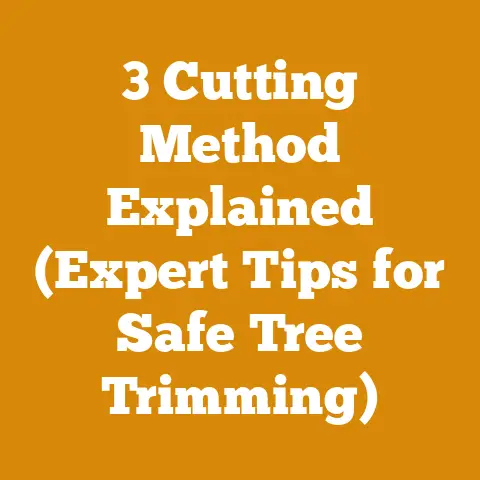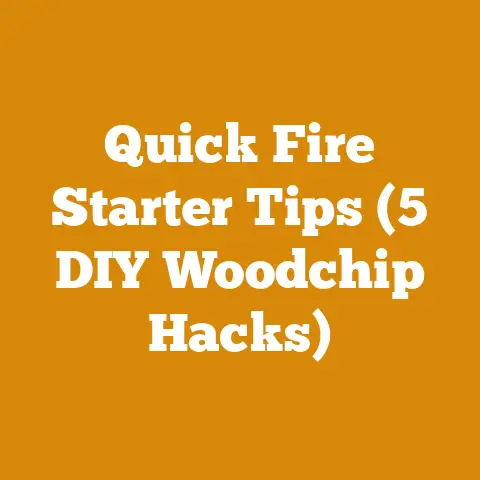Buffing Epoxy Resin Techniques (Pro Tips for Woodworkers)
Buffing Epoxy Resin Techniques (Pro Tips for Woodworkers)
Introduction
In an era where eco-consciousness meets craftsmanship, the fusion of wood and epoxy resin has surged in popularity. This marriage of natural beauty and synthetic innovation allows us to create stunning pieces while also exploring sustainable practices. As woodworkers, we’re constantly seeking ways to enhance our creations, and buffing epoxy resin is a critical step in achieving that flawless, glass-like finish. The final polish can make or break a project, which is why mastering buffing techniques is essential. I’ve spent years experimenting with different methods, and I’m excited to share my experiences and insights, including how to optimize your process and manage costs effectively. Let’s dive in!
Understanding the Importance of Buffing Epoxy Resin
Buffing epoxy resin isn’t just about aesthetics; it’s about bringing out the true potential of your work. A well-buffed surface showcases the depth and clarity of the resin, enhancing the wood’s natural grain and color. It also provides a smooth, tactile finish that’s a pleasure to touch.
- Aesthetics: Buffing removes micro-scratches and imperfections, resulting in a high-gloss, mirror-like surface.
- Durability: A properly buffed epoxy finish is more resistant to scratches and wear.
- Professionalism: A flawless finish elevates the perceived value of your work, making it more appealing to clients and customers.
Preparing Your Epoxy Resin for Buffing: The Foundation for Success
Before you even think about touching a buffing wheel, proper preparation is paramount. This stage can significantly impact the final result and minimize the effort required during buffing.
Sanding: The Necessary Evil
Sanding is the most crucial step in preparing your epoxy resin for buffing. It removes imperfections, levels the surface, and creates a consistent texture for the buffing compounds to work with. I can’t stress enough how important this stage is. I once rushed the sanding process on a large river table, and I ended up spending twice as long buffing, only to achieve a mediocre result. Learn from my mistakes!
- Start with the Right Grit: Begin with a coarse grit sandpaper (e.g., 120 or 180) to remove any major imperfections or unevenness.
- Progress Gradually: Work your way up through progressively finer grits, typically in the following sequence: 120, 180, 220, 320, 400, 600, 800, 1000, 1200, 1500, 2000, 2500, 3000, and even higher if desired.
- Wet Sanding: I highly recommend wet sanding with the finer grits (800 and above). This reduces friction, prevents clogging of the sandpaper, and produces a smoother finish. Use water with a drop of dish soap as a lubricant.
- Clean Thoroughly: After each sanding step, wipe the surface clean with a damp cloth and allow it to dry completely before moving on to the next grit. This removes any abrasive particles that could contaminate the subsequent sanding stages.
Ensuring a Smooth and Level Surface
A perfectly level surface is essential for achieving a uniform buffed finish. Any dips, bumps, or imperfections will be magnified during the buffing process.
- Use a Leveling Tool: A long sanding block or a power sander with a leveling attachment can help you achieve a flat surface.
- Check for Imperfections: Use a straightedge or a flexible ruler to check for any unevenness.
- Address Problem Areas: If you find any imperfections, focus your sanding efforts on those areas until they are level with the surrounding surface.
- Cost Consideration: Investing in quality sanding tools and abrasives is a worthwhile expense. While cheaper options may seem appealing, they often wear out quickly, produce inconsistent results, and ultimately cost more in the long run. I estimate that using high-quality sandpaper can increase material cost by 20-30% but reduces labor time by 15-20% due to its efficiency and durability.
Choosing the Right Buffing Tools and Compounds
Selecting the right tools and compounds is crucial for achieving a professional-quality buffed finish. There are various options available, each with its own strengths and weaknesses.
Buffing Wheels: Material Matters
Buffing wheels come in a variety of materials, each suited for different stages of the buffing process.
- Cotton Wheels: These are the most common type of buffing wheel and are ideal for general buffing and polishing. They are relatively inexpensive and readily available.
- Flannel Wheels: These softer wheels are excellent for final polishing and achieving a high-gloss finish.
- Felt Wheels: These dense wheels are used for aggressive cutting and removing deep scratches.
- Loose vs. Stitched Wheels: Loose wheels are more flexible and conform to curved surfaces, while stitched wheels are more rigid and provide more aggressive cutting action.
- Cost Consideration: Good quality buffing wheels can range from \$15 to \$50 each, depending on the size and material. I recommend investing in a variety of wheels to suit different stages of the buffing process. I’ve found that cotton wheels last longer and are more cost-effective for initial buffing, while flannel wheels are essential for the final polish.
Buffing Compounds: The Abrasive Magic
Buffing compounds contain abrasive particles that remove imperfections and create a smooth, polished surface. They come in a variety of grits, each designed for a specific stage of the buffing process.
- Cutting Compounds: These aggressive compounds are used to remove deep scratches and imperfections.
- Polishing Compounds: These finer compounds are used to refine the surface and create a smooth, even finish.
- Finishing Compounds: These ultra-fine compounds are used to achieve a high-gloss, mirror-like shine.
- Compound Types: Common compounds include Tripoli (for non-ferrous metals and plastics), White Rouge (for general polishing), and Blue Rouge (for final polishing and achieving a high gloss).
- Cost Consideration: Buffing compounds typically cost between \$10 and \$30 per bar. A little goes a long way, so a single bar can last for multiple projects. I always buy a compound sample pack to get a good feel for each compound before investing in a larger quantity.
Buffing Machines: Power and Precision
Choosing the right buffing machine is essential for efficient and effective buffing.
- Bench Grinders: These are the most common type of buffing machine used by woodworkers. They are relatively inexpensive and versatile.
- Dedicated Buffing Machines: These machines are specifically designed for buffing and polishing and offer more power and control than bench grinders.
- Rotary Tools: Rotary tools like Dremels can be useful for buffing small or intricate areas.
- Variable Speed: A variable-speed buffing machine is highly recommended, as it allows you to adjust the speed to suit the specific task and compound you are using.
- Cost Consideration: A decent bench grinder can cost between \$100 and \$300. Dedicated buffing machines can range from \$300 to \$1000 or more. I started with a basic bench grinder and gradually upgraded as my needs grew. Remember to factor in the cost of safety equipment, such as eye protection and a dust mask.
The Buffing Process: Step-by-Step Guide
Now that you have the right tools and materials, let’s walk through the buffing process step-by-step.
Step 1: Applying the Buffing Compound
- Charge the Wheel: While the buffing wheel is spinning at a low speed, gently press the buffing compound against it. The wheel will pick up the compound and become “charged.”
- Apply Sparingly: Apply the compound sparingly. Too much compound can create a mess and reduce the effectiveness of the buffing process.
- Reapply as Needed: Reapply the compound as needed, typically every few minutes or when the wheel starts to lose its cutting power.
Step 2: Buffing the Surface
- Maintain a Consistent Angle: Hold the workpiece at a consistent angle to the buffing wheel.
- Use Light Pressure: Use light pressure and let the buffing wheel do the work. Applying too much pressure can cause the compound to cake up and scratch the surface.
- Keep Moving: Keep the workpiece moving to avoid overheating the surface and creating swirl marks.
- Overlap Passes: Overlap each pass slightly to ensure complete coverage.
- Start with the Cutting Compound: Begin with the cutting compound to remove any remaining scratches and imperfections.
- Progress to Finer Compounds: Gradually progress to finer compounds, such as polishing and finishing compounds, to refine the surface and achieve a high-gloss finish.
Step 3: Cleaning the Surface
- Remove Excess Compound: After each buffing step, clean the surface with a soft cloth or a microfiber towel to remove any excess compound.
- Use a Solvent (Optional): If necessary, use a solvent such as mineral spirits or naphtha to remove stubborn compound residue. Be sure to use appropriate safety precautions when working with solvents.
- Inspect Carefully: Inspect the surface carefully under good lighting to ensure that all scratches and imperfections have been removed.
Step 4: Final Polish
- Use a Clean Flannel Wheel: Use a clean flannel wheel and a finishing compound to achieve a high-gloss, mirror-like shine.
- Apply Light Pressure: Apply very light pressure and keep the workpiece moving.
- Enjoy the Results: Step back and admire your beautifully buffed epoxy resin finish!
Cost Optimization Strategies: Saving Money Without Sacrificing Quality
Buffing epoxy resin can be a time-consuming and potentially expensive process. However, there are several strategies you can use to optimize your costs without sacrificing quality.
- Buy in Bulk: Purchase buffing compounds and abrasives in bulk to save money.
- Maintain Your Equipment: Regularly clean and maintain your buffing wheels and machines to prolong their lifespan.
- Use the Right Tool for the Job: Using the appropriate tool for each stage of the buffing process can save time and reduce material waste.
- Practice Makes Perfect: The more you practice, the better you will become at buffing epoxy resin, which will reduce errors and waste.
- Consider Alternatives to Buffing: For certain projects, you might consider alternatives to buffing, such as using a self-leveling epoxy resin or applying a clear coat finish. These options may be less labor-intensive and more cost-effective.
- Cost Breakdown Example: Let’s say you’re working on a small epoxy river table. Here’s a rough breakdown of potential costs:
- Sandpaper (various grits): \$20 – \$40
- Buffing Wheels (cotton, flannel): \$30 – \$60
- Buffing Compounds (cutting, polishing, finishing): \$30 – \$90
- Cleaning Supplies (cloths, solvent): \$10 – \$20
- Electricity: Minimal
- Total Estimated Cost: \$90 – \$210
Common Mistakes to Avoid: Learning from Experience
Even experienced woodworkers can make mistakes when buffing epoxy resin. Here are some common pitfalls to avoid.
- Skipping Sanding Steps: Rushing the sanding process is a surefire way to end up with a subpar finish.
- Using Too Much Compound: Applying too much compound can create a mess and reduce the effectiveness of the buffing process.
- Applying Too Much Pressure: Applying too much pressure can cause the compound to cake up and scratch the surface.
- Overheating the Surface: Overheating the surface can cause the epoxy resin to soften and distort.
- Using Dirty Buffing Wheels: Using dirty buffing wheels can contaminate the surface and introduce scratches.
- Neglecting Safety Precautions: Always wear appropriate safety gear, such as eye protection and a dust mask, when buffing epoxy resin.
Troubleshooting: Addressing Common Issues
Even with the best preparation and technique, you may encounter issues during the buffing process. Here are some common problems and how to address them.
- Swirl Marks: Swirl marks are caused by using too much pressure or by not keeping the workpiece moving. To remove swirl marks, go back to a finer grit compound and buff the surface again.
- Haze: Haze is caused by using a compound that is too fine or by not cleaning the surface properly. To remove haze, use a slightly more aggressive compound and buff the surface again.
- Scratches: Scratches are caused by using a compound that is too coarse or by using dirty buffing wheels. To remove scratches, go back to a coarser grit compound and buff the surface again.
- Uneven Finish: An uneven finish is caused by not sanding the surface properly or by not applying the buffing compound evenly. To correct an uneven finish, re-sand the surface and then buff it again.
Advanced Techniques: Taking Your Buffing Skills to the Next Level
Once you have mastered the basics of buffing epoxy resin, you can explore some advanced techniques to further enhance your results.
- Micro-Mesh Abrasives: Micro-mesh abrasives are ultra-fine sanding pads that can be used to achieve an incredibly smooth and polished surface before buffing.
- Diamond Polishing Compounds: Diamond polishing compounds contain microscopic diamond particles that provide exceptional cutting power and produce a flawless finish.
- Using a Polishing Mop: A polishing mop is a large, soft wheel that is used to apply polishing compounds and achieve a high-gloss finish.
- Buffing with a Flex Shaft: A flex shaft attachment can be used to buff intricate or hard-to-reach areas.
The Future of Epoxy Resin Buffing: Innovation and Sustainability
As technology advances and environmental awareness grows, the future of epoxy resin buffing will likely be shaped by innovation and sustainability.
- Eco-Friendly Compounds: Manufacturers are developing more eco-friendly buffing compounds that are biodegradable and less harmful to the environment.
- Automated Buffing Systems: Automated buffing systems are becoming increasingly popular for high-volume production, offering greater efficiency and consistency.
- Sustainable Resins: The development of bio-based epoxy resins made from renewable resources is gaining momentum, reducing the reliance on fossil fuels.
- 3D Printing and Epoxy: The combination of 3D printing and epoxy resin is opening up new possibilities for creating intricate and complex designs.
Case Studies: Real-World Examples of Buffing Excellence
Let’s take a look at a couple of case studies to illustrate the impact of proper buffing techniques.
- Start Small: Begin with a small project to practice your buffing skills.
- Invest in Quality Tools: Invest in quality buffing wheels, compounds, and a buffing machine.
- Experiment with Different Techniques: Try different buffing techniques to find what works best for you.
- Take Notes: Keep track of your results and make notes on what you learn.
- Join a Woodworking Community: Connect with other woodworkers online or in person to share tips and learn from each other.
- Don’t Be Afraid to Ask for Help: If you’re struggling with a particular aspect of the buffing process, don’t hesitate to ask for help from experienced woodworkers.
Conclusion: Mastering the Art of the Shine
Buffing epoxy resin is an art that requires patience, practice, and attention to detail. By following the techniques and tips outlined in this guide, you can achieve a flawless, professional-quality finish that will elevate your woodworking projects to the next level. Remember, the key is to start with proper preparation, use the right tools and materials, and take your time. With a little practice, you’ll be able to master the art of the shine and create stunning pieces that will be admired for years to come. And while cost is always a factor, remember that investing in quality materials and equipment will ultimately save you time and money in the long run. So, go forth, experiment, and create! The world of beautifully buffed epoxy resin awaits.






